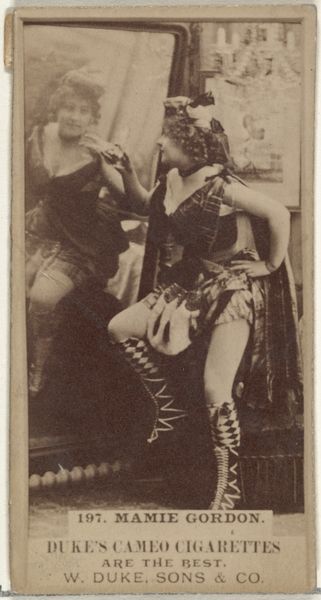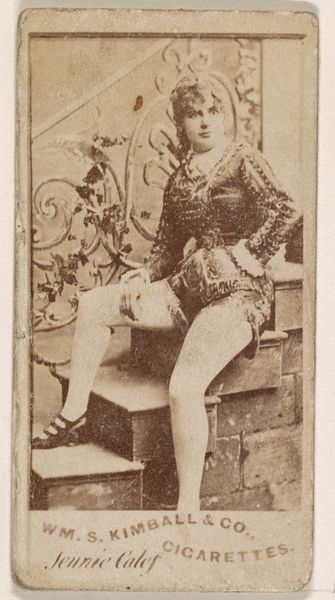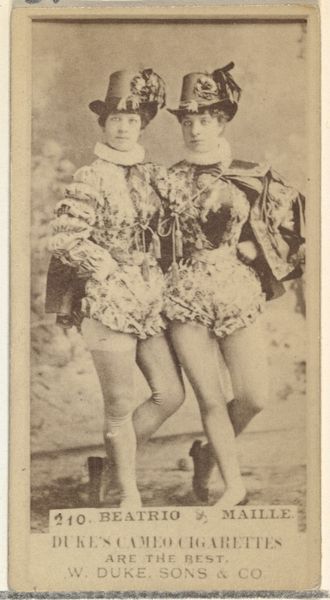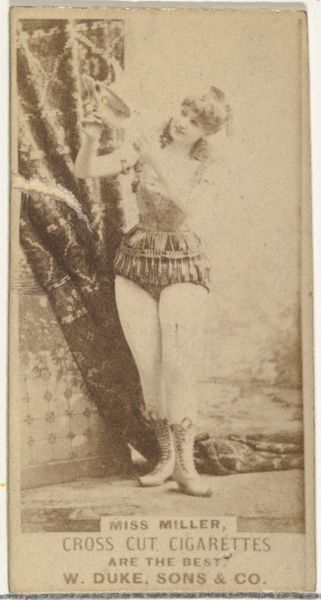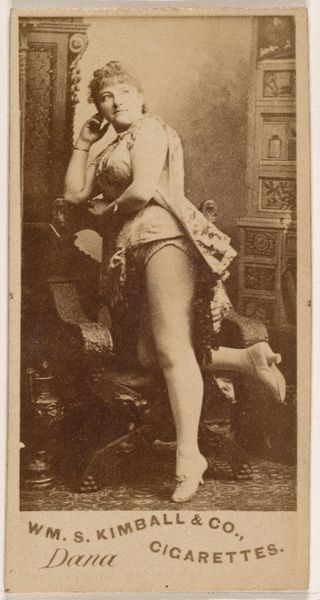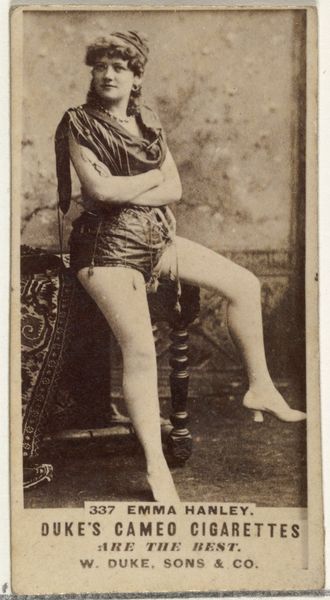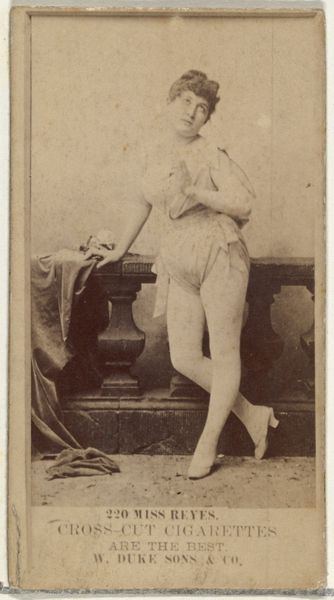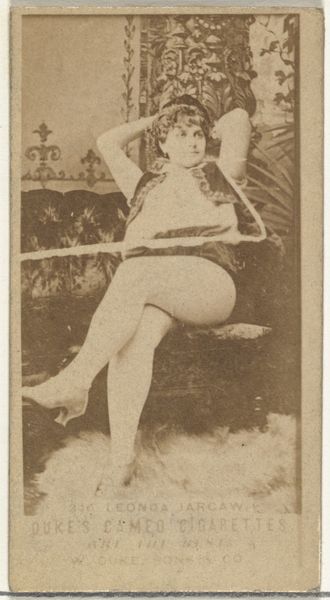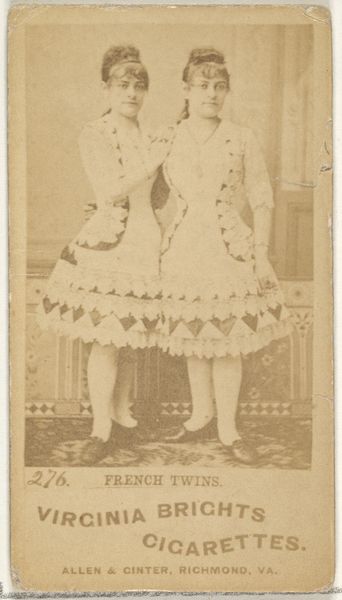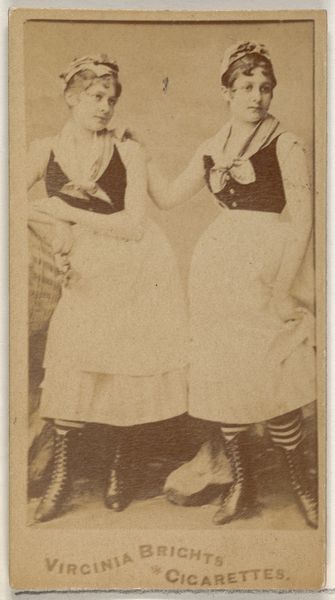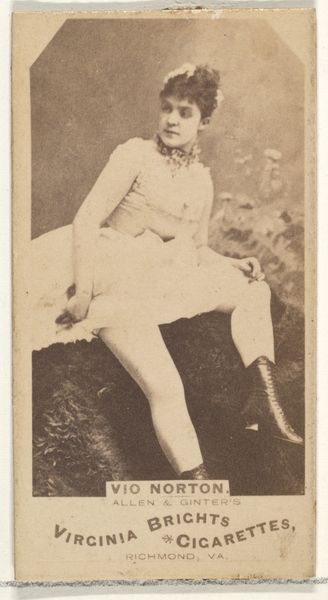
Lillis Sisters, from the Actors and Actresses series (N145-3) issued by Duke Sons & Co. to promote Cross Cut Cigarettes 1880s
0:00
0:00
drawing, print, photography
#
portrait
#
drawing
# print
#
photography
#
genre-painting
Dimensions: Sheet: 2 11/16 × 1 3/8 in. (6.8 × 3.5 cm)
Copyright: Public Domain
Curator: This promotional card, produced by W. Duke, Sons & Co. in the 1880s, advertises Cross Cut Cigarettes using the image of the Lillis Sisters, popular actresses of the time. Editor: The sepia tone gives it a delicate, old-world feel. There's something playful and intimate about the composition, the sisters posed informally with an arm around one another. It's interesting how their attire—those elaborate corsets and high-laced boots—suggests a life of performance. Curator: Absolutely. In the 19th century, performers like the Lillis Sisters became icons, their images circulated widely, fostering a culture of celebrity and aspiration. These cards served not only as advertisements but also as collectible tokens, offering a glimpse into the glamorous world of the stage. Editor: What strikes me is the duality in how they present themselves. On one hand, the costumes imply some high drama—some grand, theatrical persona. On the other, it seems somewhat awkward because their figures have been rendered quite flat. Curator: It's true. I see that duality as a reflection of the burgeoning mass media culture. This is when photographic images of public figures started to carry different meanings and began circulating widely through new networks. The Lillis Sisters are made into symbols of both beauty and leisure, directly tied to the pleasures of smoking. Editor: How interesting that smoking, as a pleasure, is so attached to idealized types or popular figures, like actresses. If one were to explore what's beneath it all, it probably speaks volumes about commerce, but more intriguingly about a deep-rooted human impulse toward a communal ideal. Curator: I concur entirely, their appeal, even now, reflects our tendency to build ideals around familiar, repeated faces in our collective memories. We keep returning to archetypes, like theirs, but remolding them as we project newer values and dreams. Editor: Yes. Thanks to them, the image of cigarette smoking is no longer simply commerce or idealized figure, but is itself archetypal: something much bigger in art and visual culture. Curator: A fascinating symbol, for sure. Thank you for unpacking its complex layers with me!
Comments
No comments
Be the first to comment and join the conversation on the ultimate creative platform.
